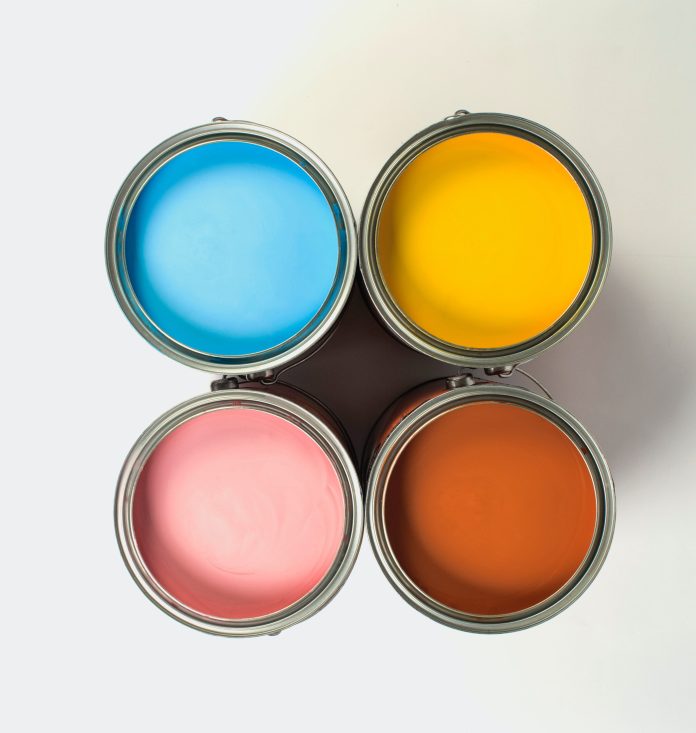When it comes to enhancing the appearance of uPVC surfaces, a common question arises: “What paint can I use on uPVC?”
uPVC, or unplasticised polyvinyl chloride, is a popular material in construction, known for its durability and low maintenance. However, if you’re looking to change the colour or refresh the look of uPVC windows, doors or other fixtures, choosing the right paint can be tricky.
In this guide, we’ll explore the world of uPVC painting, from understanding the material to selecting the appropriate paint and applying it effectively. Get ready to transform your uPVC surfaces and breathe new life into your space.
Understanding uPVC
Before delving into the world of uPVC painting, it’s essential to grasp what uPVC is and why it’s commonly used in construction. uPVC stands for unplasticised polyvinyl chloride, a synthetic material known for its remarkable durability and resistance to various environmental factors.
uPVC is often used for windows, doors, gutters and other exterior fixtures due to its low maintenance requirements and resistance to rot, corrosion and fading. However, its standard white appearance may not always align with your design preferences. That’s where painting uPVC surfaces comes into play, allowing you to customise their look while retaining their inherent advantages.
Why Paint uPVC?
While uPVC offers numerous benefits in terms of durability and low maintenance, there are several reasons why you might consider painting uPVC surfaces:
- Aesthetic Enhancement: Painting allows you to change the colour and appearance of uPVC fixtures to match your design preferences.
- Personalisation: It offers a chance to customise your home’s exterior to reflect your style.
- Restoration: Over time, uPVC may lose its original lustre and painting can rejuvenate its look.
- Protection: Paint can provide an additional layer of protection against environmental factors.
Whether you’re looking to refresh the look of your home or add a personal touch, painting uPVC surfaces can be a practical solution.
Choosing the Right Paint for uPVC
Selecting the right paint for your uPVC surfaces is essential for a successful project. The two primary types of paint suitable for uPVC are acrylic-based and solvent-based paints. Acrylic-based paints are water-based, making them environmentally friendly and low in VOCs (Volatile Organic Compounds). Solvent-based paints, on the other hand, offer excellent adhesion and durability but may have higher VOC levels.
When choosing paint, consider the following:
- Type of uPVC Surface: Different surfaces (windows, doors, gutters) may require specific paint types.
- Colour and Finish: Decide on the desired colour and finish (gloss, satin, matte) for your project.
- Weather Resistance: Ensure the paint is suitable for outdoor use and can withstand UV exposure and harsh weather conditions.
- Primer: Some paints require a uPVC primer, so check compatibility.
- Application Method: Consider whether you’ll spray, brush, or roll on the paint.
Consult with a paint expert or refer to the manufacturer’s guidelines to make the right paint choice for your uPVC painting project.
Surface Preparation
Before you begin the painting process, proper surface preparation is key to achieving a smooth and long-lasting finish on your uPVC surfaces. Here are the essential steps:
- Clean the Surface: Remove dirt, dust and grime using a mild detergent or uPVC cleaner. Rinse thoroughly and allow it to dry completely.
- Sand the Surface: Lightly sand the uPVC with fine-grit sandpaper to create a rough texture that helps the paint adhere better.
- Prime the Surface: Apply a suitable uPVC primer to ensure proper adhesion of the paint. Allow it to dry according to the manufacturer’s instructions.
By following these steps, you’ll create an ideal surface for paint application and ensure a more durable and attractive finish.
Colour Options and Finishes
When painting uPVC, you have a wide range of colour options and finishes to choose from. Whether you prefer classic neutrals, bold accents or something in between, there’s a colour that suits your style.
Additionally, you can select from various finishes, including glossy, satin or matte, to achieve the desired look for your uPVC surfaces.
DIY vs. Professional Help
Deciding whether to undertake the uPVC painting project as a DIY endeavour or seek professional assistance depends on your skills and the scope of the project.
Smaller projects like window frames may be suitable for DIY, but for larger or more complex tasks like painting entire exteriors, professional help may ensure a high-quality finish and save time.
Mastering the Art of uPVC Transformation
Painting uPVC surfaces offers a practical way to enhance the aesthetics of your home while preserving the material’s durability. By understanding uPVC, choosing the right paint, preparing the surface and following the appropriate techniques, you can transform your uPVC fixtures.
Whether you opt for a DIY approach or enlist professional assistance, a fresh coat of paint can breathe new life into your space and reflect your personal style. So, get ready to embark on your uPVC painting journey and enjoy the refreshed look of your home.

















